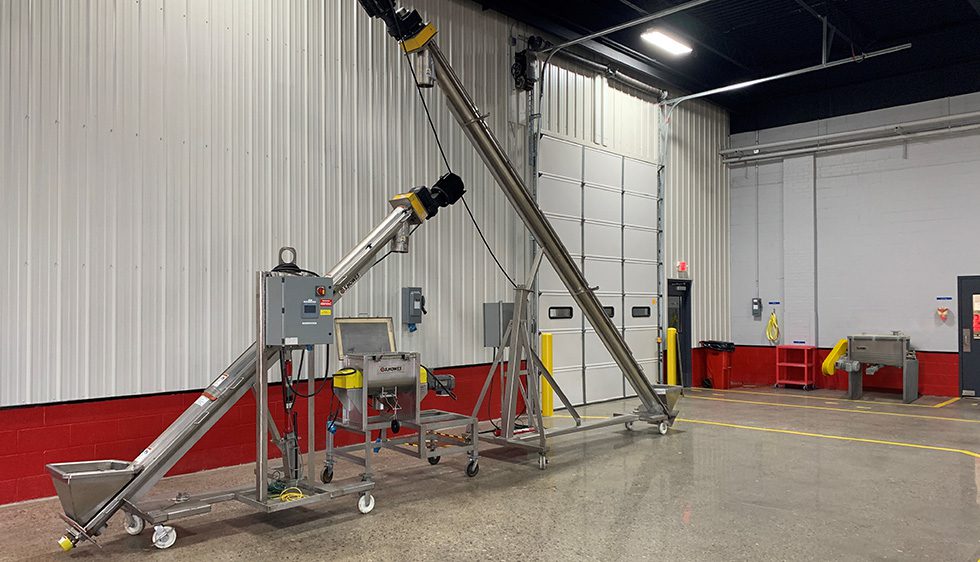
Posted on January 3rd, 2024 by showes
Conveyor safety is not a topic to overlook. Poorly maintained or designed conveyor systems can easily lead to accidents, costing money and lives. This guide highlights why conveyor safety should be a top priority and what measures can be enacted to ensure a safer work environment.
The Risks of Ignoring Conveyor Safety
When conveyors lack safety standards, the outcomes can be harsh. Here are four risks tied to this oversight:
Injuries or Fatalities
The first hazard is entanglement, where workers’ hands or fingers might get trapped in the conveyor’s moving parts, mostly during cleaning or maintenance jobs. Other hazards include abrasion from the moving belt, crushing in belt-tensioning gadgets, and severing in screw conveyors.
Fines and Penalties
Bodies like OSHA set strict rules on conveyors for safety. Ignoring these rules can lead to hefty fines and penalties, which can hit a company’s financial health hard. The use of OSHA sections 1910 and 1926 stresses the need to stick to safety rules.
Loss of Productivity
Accidents on conveyors can stop operations and can require a break for checks and fixes. This break leads to a drop in productivity, which then hits a company’s revenue and overall work. Also, any workers hurt need time off to heal, which further adds to the productivity drop.
Damage to Reputation
Accidents from not following safety rules can spoil a company’s reputation, affecting its ties with customers, suppliers, and stakeholders. Plus, this can lessen trust and may prevent future business deals. Following safety rules is necessary to keep a good reputation in the market.
Best Practices to Ensure Safety Around Conveyor Systems
Avoiding Contact with Conveyors
Avoid sitting, standing, or walking on conveyors, as they aren’t designed for holding people. They have areas that can pinch, catch, and tear, which cause severe or even deadly injuries.
Precautions During On-Going Maintenance
Ensure maintenance is avoided until all power sources like electricity, air, or hydraulics are turned off. Stick to Lock Out, Tag Out (LOTO) rules ensure that conveyors are safely turned off and can’t be turned back on until maintenance is complete.
Handling Controls and Guards
Only allow trained workers to manage conveyor controls and ensure unauthorized users can not change or misuse conveyor controls. Plus, ensure controls have guards to shield operators and replace the guards after maintenance.
Personal Safety Precautions
Items such as hair, loose clothes, and ties should strictly be kept away from conveyor systems when they are in operation to prevent getting tangled in the machinery.
Training and Hazard Reporting
Every worker should be trained on conveyor safety. They should also be informed about the nooks and corners of using conveyors, such as where all the controls are and how they work.
Emergency Stops
Follow the Occupational Safety and Health Administration (OSHA) rules for emergency stops. These include having a way to stop the motor at the operator’s station and making sure emergency stop switches are set up so the conveyor can’t be turned on again until the switch is set to the “ON” position.
To summarize, conveyor safety is crucial to avoid accidents that can cause injuries and impact operations and your company’s reputation. A safer work environment can be created by following safety practices–such as avoiding contact with conveyors, following maintenance precautions, and ensuring proper training.
This emphasis on safety will help you comply with regulatory standards and minimize risks. With that, you will be able to ensure the well-being of your workforce and smooth operational processes.
A Quick Note on S. Howes and Safety
At S. Howes, safety is a critical component of every conveyor system we design. Beyond compliance, we aim for designs that proactively minimize risks, ensuring that employees and assets are well-protected.
Our conveyor offerings include:
- Heavy-duty screw auger designs
- Sanitary screw auger designs
- Mechanical split tube conveyors
- Tubular conveyors
- U-trough conveyors with options for dewatering, heating & cooling, mixing, and drying
If you’re interested in a conveyor system that prioritizes safety and efficiency, consider S. Howes. For more details, contact us.





